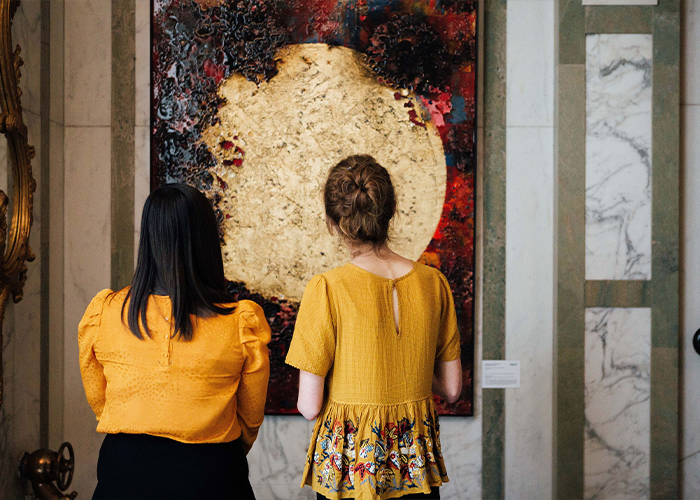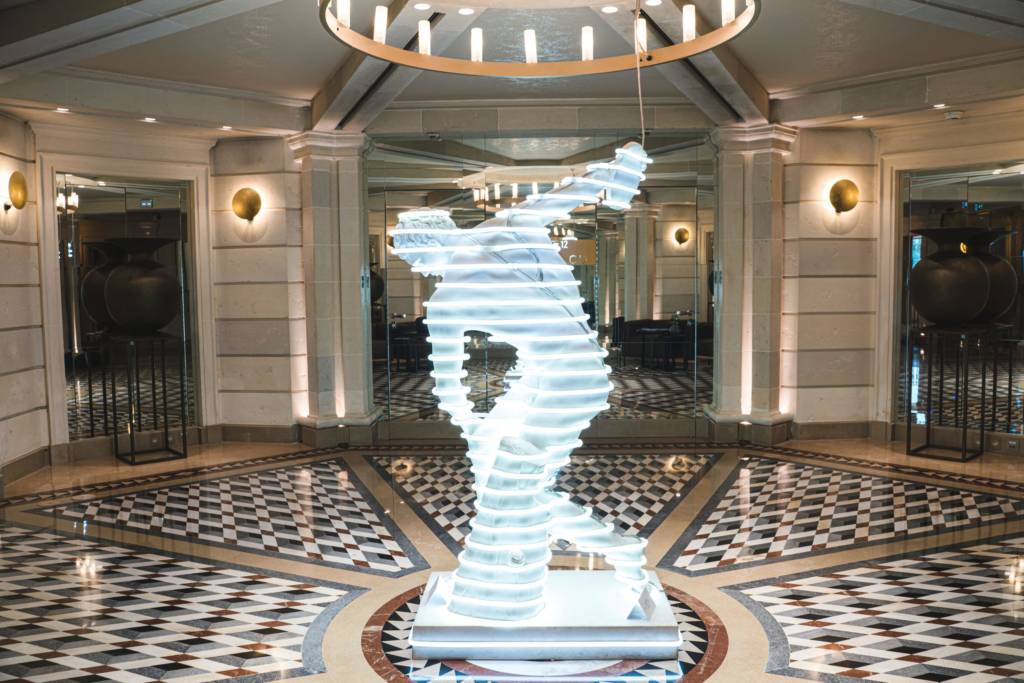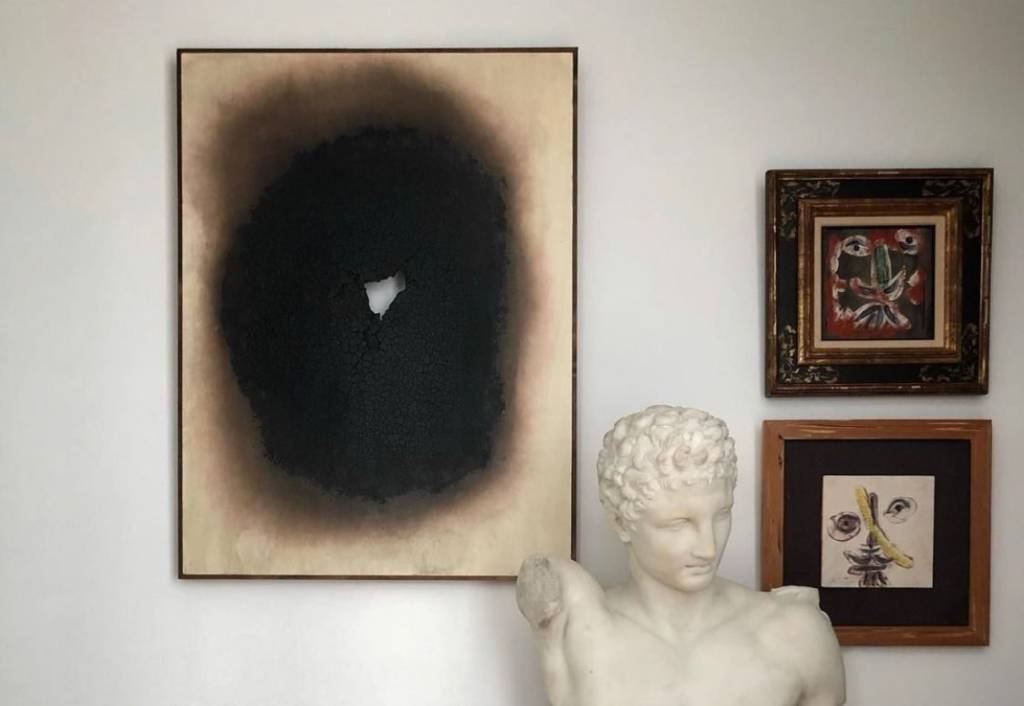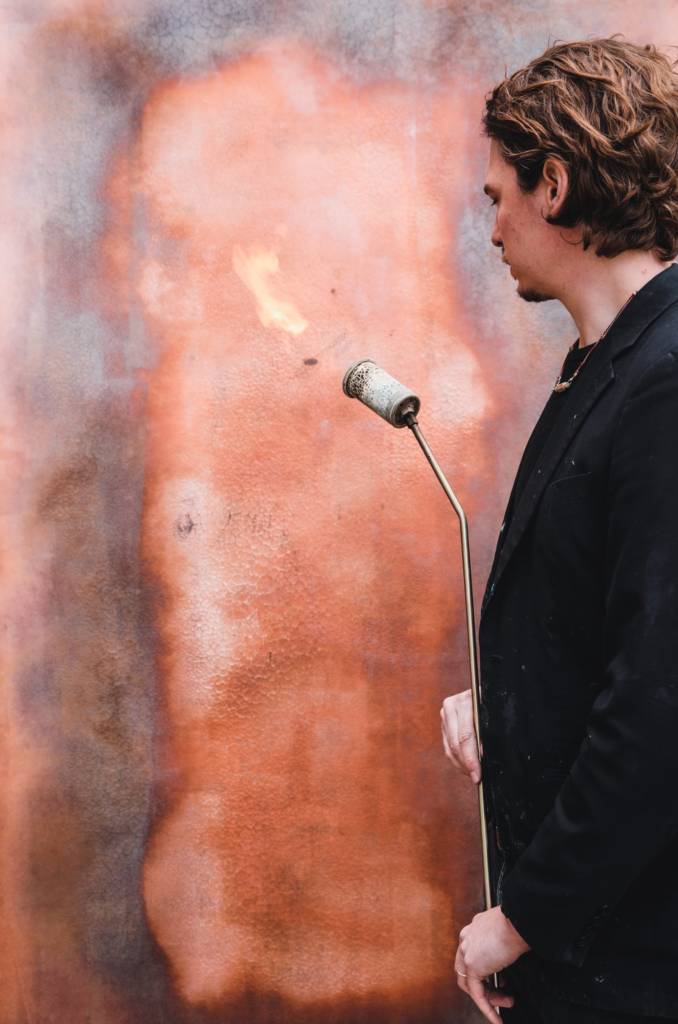Making a more sustainable world through art and collections
by our Ambassador Charlotte Fletcher (follow Charlotte here)
Sustainability has been a key watchword for a while, with businesses taking on ‘Heads of Sustainability’, governments setting targets and a boom in consumers making efforts to eat and buy more sustainable goods and produce. One consequence of this boom is ‘greenwashing’ -companies talking loudly about what they want to be perceived as doing to encourage consumers to engage – yet doing very little in practice. The sentiment has certainly extended to the art world, where discussions and conferences around the sector’s impact have provoked some action and art fairs and major galleries are making noises about their efforts to reduce waste and environmental efficiency. While some progress has certainly been made, there is a very long way to go.
As a concept, sustainability is an incredibly multifaceted and convoluted issue, incorporating far more than simply recycling and sustainable wood, carbon emissions and excessive use of energy. Without a broader outlook, we overlook what is happening outside of our window and fail to recognize our damaging impact. For Tracey Brown, MTArt Agency investor and art collector, sustainability is a fundamental pillar of her lifestyle and the heartbeat of everything we do. For her, global sustainability “encompasses best environmental practice with best societal and cultural practices, crucial for improved understanding and empathy across humanity. My art collection largely reflects both the obvious and subtle elements of my personal view for a sustainable world.” This idea of cultural sustainability is key to preserving our planet, and the two are intrinsically linked. Take for example, the Japanese practice of Kintsugi. In Japan, artistic recycling, or rather upcycling, has become a part of the culture. Repairing a broken bowl with gold gives an object further value and meaning, while avoiding waste. Through creating, collecting and engaging with art, we are able celebrate and preserve cultural sustainability, the process of which will lead to a healthier planet.
There exists a wealth of artists whose environmental concerns are embodied throughout their body of work. Artists have a unique position to raise awareness and incite real-world impact, communicating on a global scale both on a practical and emotional level. In order to harness this power, artists with such concerns investment from collectors and galleries. Art must also be made accessible to everyone; an essential in daily life, not a luxury for the elite. There is significant evidence that collectors are keen to support artists whose work carries a message – according to Artsy, 67% of collectors purchase art to inspire them and 58% are primarily moved to acquire pieces because of the subject matter and story behind the work.
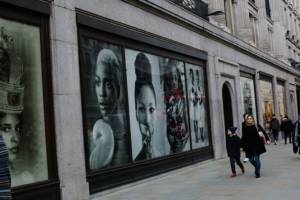
David Aiu Servan-Schreiber, whose series ‘Fever’ and ‘Planets’ both focus on environmental damage and climate change and are highly collectable, and feature in collections of international importance. Support from established collectors has allowed Servan-Schreiber to use his work to encourage behavioural change, for example, he was commissioned by Foundation Good Planet in Paris to create a permanent 16m sculpture that would raise awareness and educate visitors on the extinction of bees. One of Servan-Schreiber’s collectors, David Leppan – a member of MTArt Agency’s Selection Committee, supports Servan-Schreiber “not just as an artist but as a human. He is a good guy. That’s important to me. It’s not just about his artwork, it’s very much what he puts out into the world. His attitude, his commitments and concerns. And he is a perfect example of an artist highlighting the situation we find ourselves in. Drawing to our attention in his way that if we don’t change, our world will end up looking like one of his works. That is bold and I like people who are.” It is through investors with mindsets like this, investing in artists who are aligned with collectors’ personal beliefs, that art can encourage and facilitate real-world change through exposure, discussion and financial backing.
The power of art is a constant and lived-with reminder, an unaggressive warrior for its cause, speaking directly to its viewer emotionally. Brown, who also collects Servan-Schreiber’s work explains that his art “certainly reflects my desire to remind myself and others about the for awareness of our planet and environment; his adaptation of processes and ideas as he develops concepts send a clear message – you only need to look at the “Fever” series as a reaction to the pandemic to understand his call to action. I love the way his works have a literal sense of earth as well – what you see and what you touch are one and the same – it’s a very emotional experience.”

Another artist whose work directly incites environmental change and conservation is Lauren Baker, whose campaign to plant 8888 trees in the Amazon with “One Tree Planted” launched in July 2018 and has so far planted over 6500 trees by asking her collectors to plant a tree for $1 with every piece of art they buy.
There are a significant number of advocates for a more sustainable sector who are working to improve practices, spanning collectors, businesses and artists. A world in which artists have as much influence as figures like Kim Kardashian is surely a better world, raising awareness of environmental issues and gaining a platform to provide solutions and incite change.
The pressure to create a more sustainable art sector should not of course be placed solely on the artists. There is a hugely important role for other players, including galleries, agents, fairs and collectors. Collectors, businesses and organisations working with artists have the real ability to ensure a sustainable future. For example, a gallery or agency with B-Corp status, like MTArt Agency, has been thoroughly assessed as ethical and sustainable in all its business practices, and working with such a company conveys a message that sustainability is important to the market, allowing the company to invest further in ethical projects and artists. Essentially, if those who care about a more positive future take the time to ensure their money is going to businesses that also care, far more will be encouraged to do so in an accountable and authentic manner.
 The past year has had an impact on the art sector, like any other, shaking up how business is conducted and the way that art is experienced. Art fairs, previously one of the largest revenue drivers, have become obsolete in a physical sense, instead we have been exploring digital routes and virtual viewing rooms. Certainly physical fairs were one of the most obvious art sector components that had tangible and immediate impact on the planet, responsible for vast carbon emissions from transporting people and art en masse across the globe, resources and materials, from structures and energy to waste produced by attendees. Before Covid, steps were being introduced to counter this negative footprint, such as Frieze using a new fuel called Green D for its London 2019 fair, with the intention of dramatically reducing its emissions, but digitalisation brings its own impact, and those bringing art to its audience must be quicker to engage with this than we were the impact of physical shows.
The past year has had an impact on the art sector, like any other, shaking up how business is conducted and the way that art is experienced. Art fairs, previously one of the largest revenue drivers, have become obsolete in a physical sense, instead we have been exploring digital routes and virtual viewing rooms. Certainly physical fairs were one of the most obvious art sector components that had tangible and immediate impact on the planet, responsible for vast carbon emissions from transporting people and art en masse across the globe, resources and materials, from structures and energy to waste produced by attendees. Before Covid, steps were being introduced to counter this negative footprint, such as Frieze using a new fuel called Green D for its London 2019 fair, with the intention of dramatically reducing its emissions, but digitalisation brings its own impact, and those bringing art to its audience must be quicker to engage with this than we were the impact of physical shows.

Perhaps in a post-Covid world, digital might occupy a more central role but the joy of art arguably comes from seeing it in person, experiencing it first-hand. Whilst 82%* of new art buyers bought online past year, will that continue if it isn’t the only option? Ultimately, sustainability comes down to businesses ensuring sure they are acting responsibly, and they will only do that with legislation and pressure from the source of their revenue and reputation – collectors. Collectors are vital in helping artists continue to have an impact and incite future positive change. Leppan believes, ‘Artists have often been a reflection of society. They hold a mirror up for us to see not just the beauty but also the underbelly of the beast that is humanity. Of course we need art to help us escape from reality but art that warns us about what lies ahead is as valuable. Arguably more so. If we pay no attention to the warnings, we will need only art to help us escape the reality we have created. There will be nothing left for us to do and nowhere left for us to go.’
*Hiscox Art report 2020
